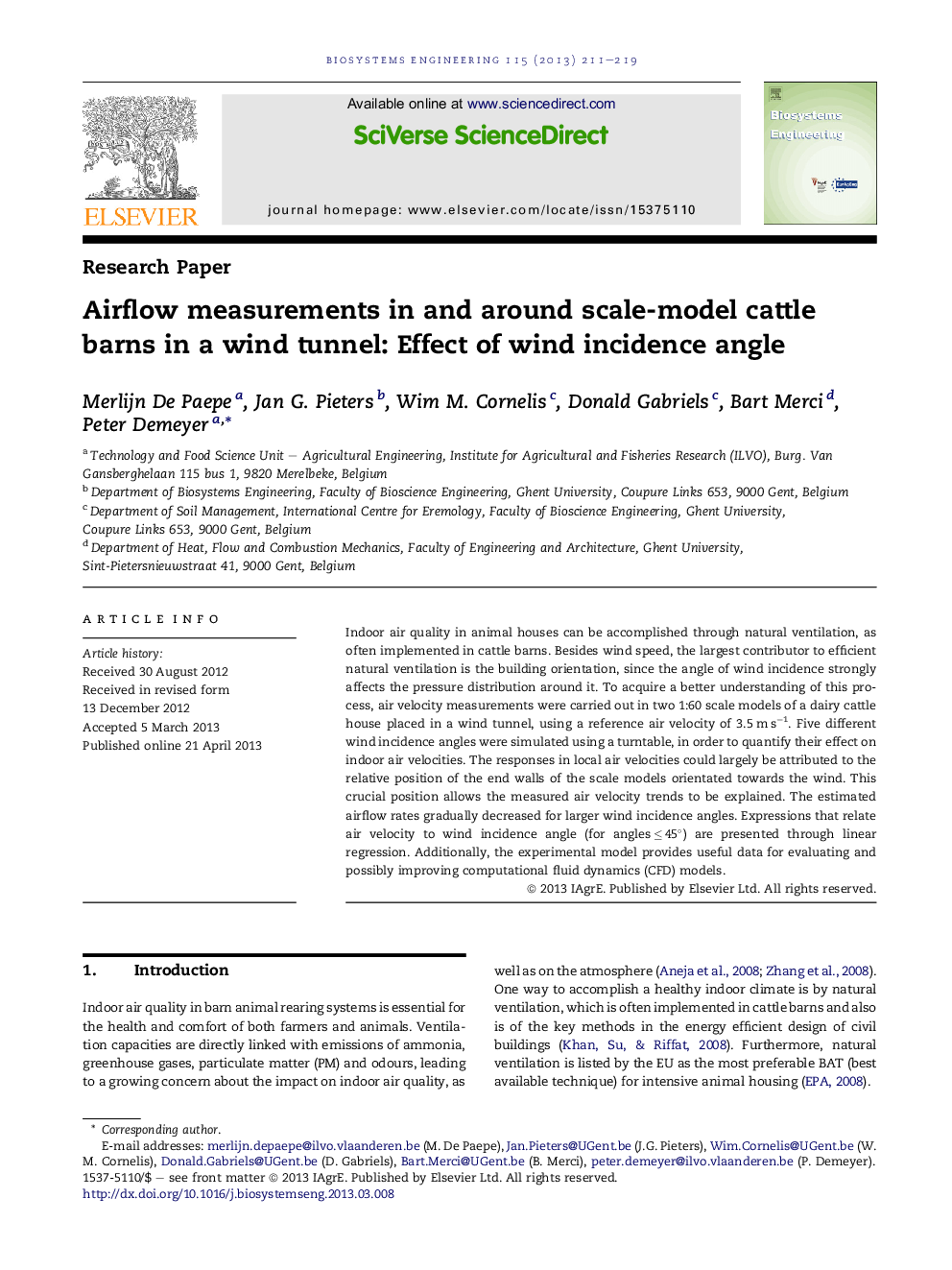| Article ID | Journal | Published Year | Pages | File Type |
|---|---|---|---|---|
| 1711395 | Biosystems Engineering | 2013 | 9 Pages |
Indoor air quality in animal houses can be accomplished through natural ventilation, as often implemented in cattle barns. Besides wind speed, the largest contributor to efficient natural ventilation is the building orientation, since the angle of wind incidence strongly affects the pressure distribution around it. To acquire a better understanding of this process, air velocity measurements were carried out in two 1:60 scale models of a dairy cattle house placed in a wind tunnel, using a reference air velocity of 3.5 m s−1. Five different wind incidence angles were simulated using a turntable, in order to quantify their effect on indoor air velocities. The responses in local air velocities could largely be attributed to the relative position of the end walls of the scale models orientated towards the wind. This crucial position allows the measured air velocity trends to be explained. The estimated airflow rates gradually decreased for larger wind incidence angles. Expressions that relate air velocity to wind incidence angle (for angles ≤ 45°) are presented through linear regression. Additionally, the experimental model provides useful data for evaluating and possibly improving computational fluid dynamics (CFD) models.
► Air velocity values are presented in a quantitative manner for two scale models. ► The wind incidence angle clearly affects indoor air velocities in the models. ► Gradual rotation of the models leads to explainable changes in indoor air velocities. ► The quantitative results are useful for the evaluation and improvement of CFD models.
